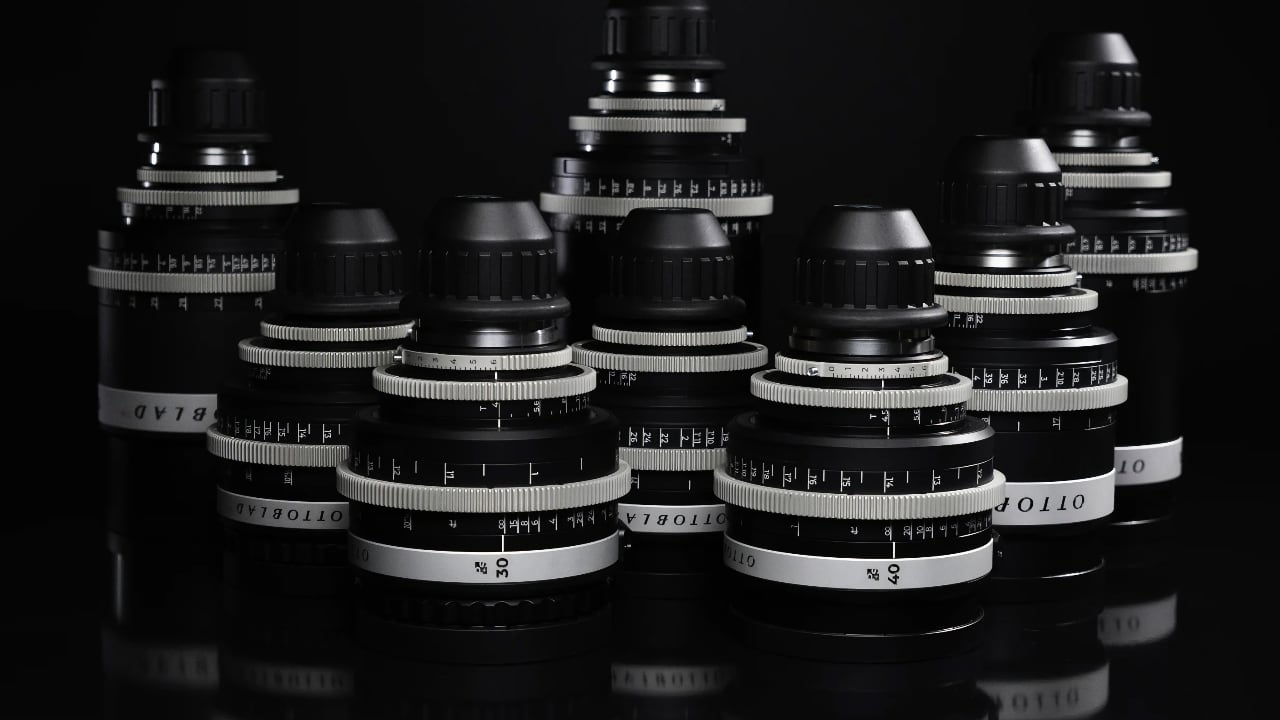
Have you ever considered using re-tooled lenses? Otto Nemenz and P+S TECHNIK have taken older Zeiss Hasselblad lenses and done just that and are now offering them for rent as part of a growing trend of using older glass.
In many ways, the Ottoblad lenses go beyond a re-tooling, and in their own words, it’s a “re-imagining” of the Zeiss Hasselblad T* C&CF’s. These medium format lenses are well known for their overall excellent image quality, which is why Otto Nemenz teamed up with P+S TECHNIK to re-work the glass.
The Ottoblad lenses have an Optical Tuner added, making it easy to take a beautiful image and fine tune it to “portrait quality,” according to Otto Nemenz. Even if you’re locked in at a specific T-Stop, you can adjust the Optical Tuner to control the focus fall-off and softness around the edges of the image. The Optical Tuner is labeled 0-6, and you simply adjust it after setting your T-Stop and focus.
The Ottoblad lenses being offered start at a 30mm prime up to 150mm, giving cinematographers plenty of options. The front diameter of all lenses is 110mm. These lenses aren’t might, many of which weigh 4.5 lbs. (2 kg).
These lenses are only available for rent at both the Los Angeles and Atlanta rental Otto Nemenz rental houses and at their site for more details.
Filmmakers Kaity Williams and Jay Holben performed several tests with the Ottoblad lenses and you can see the results on Kaity's YouTube channel.
Using older glass with newer cameras
It is not uncommon for videographers and cinematographers to find older and vintage lenses still in great condition, and use them with new cameras, sometimes having to employ an adaptor. But the results are usually quite good.
Filmmakers and cinematographers will search the internet and eBay for classic lenses to purchase, some of which are decades old, and use them on a mirrorless, DSLR, or cinema cameras of all levels. Just don’t expect many of them to be autofocus, which just adds to the experience to really hone in on your skills.
There are groups on social media and message boards that explain how to use the lenses and, in some cases, modify them for better use. Cinema lenses from the former Soviet Union are also popular.
Anecdotally, I have family who inherited vintage Nikkor lenses from the 1970s that are still in terrific condition. While the Nikon digital cameras may change for each of the two family members, the lenses stay the same, for the most part.
While there are many sites that cater to vintage lenses, Vintage Camera Hut in the UK is a nice place to start looking for old glass and camera gear. eBay, keh.com and other sites are decent options, too. Take some time and do your research as some of these lenses may not be a good option for your camera.
Are any of you using vintage lenses or considering renting the Ottoblad's for an upcoming project? Let us know!
Tags: Production Lenses


Comments